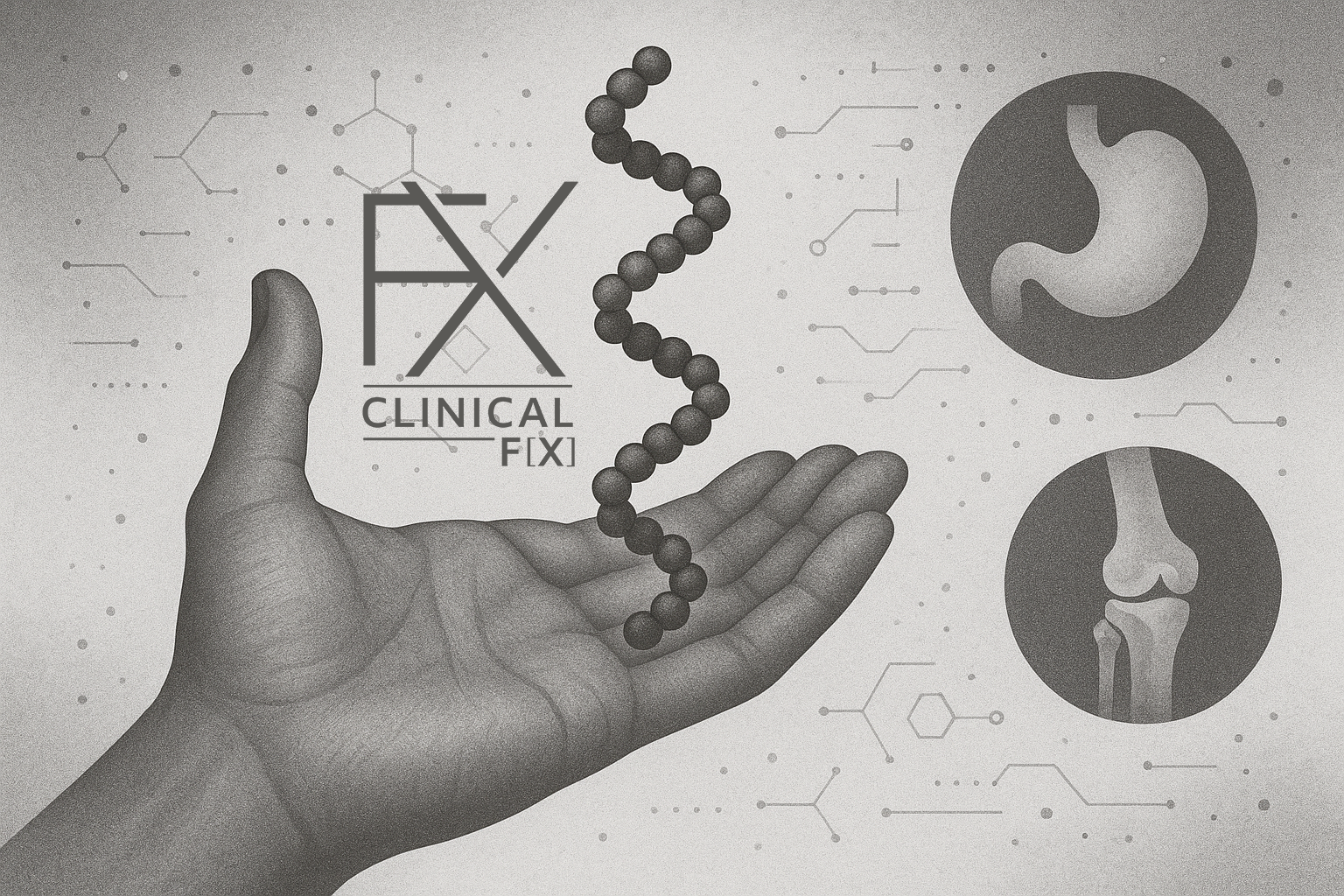The Magic of BPC-157: Exploring the Healing Peptide
In the world of regenerative medicine and biohacking, few compounds have generated as much buzz—or as much hope—as BPC-157. Dubbed by some as the “miracle healing peptide,” BPC-157’s reputation is built on a growing body of animal research and a chorus of anecdotal human success stories. But what is BPC-157, and does it live up to the magic?
What Is BPC-157?
BPC-157 stands for “Body Protection Compound 157.” It is a synthetic peptide consisting of 15 amino acids, originally derived from a protein found in human gastric juice. Unlike many peptides, BPC-157 is remarkably stable and resistant to breakdown by digestive enzymes, making it a promising candidate for both oral and injectable therapies.
How Does BPC-157 Work?
BPC-157’s magic lies in its ability to enhance the body’s natural healing mechanisms. Research suggests it works by:
• Promoting the formation of new blood vessels (angiogenesis)
• Stimulating collagen production and tissue regeneration
• Modulating inflammatory pathways to reduce pain and swelling
Enhancing blood flow to injured areas
These effects have been observed across a wide range of tissues, including muscles, tendons, ligaments, joints, skin, and even the gastrointestinal tract.
The Healing Benefits
1. Accelerated Recovery and Tissue Repair
BPC-157 has demonstrated the ability to speed up the healing of soft tissue injuries, such as muscle tears, tendon and ligament damage, and wounds. Animal studies consistently show faster and more complete recovery when BPC-157 is administered after injury.
2. Anti-Inflammatory Power
By modulating the body’s inflammatory response, BPC-157 helps reduce pain and swelling, making it a popular choice for those dealing with chronic joint pain or inflammatory conditions like arthritis.
3. Gut Health and Protection
Originally isolated from gastric juice, BPC-157 has shown particular promise in healing the gut lining, treating conditions like gastric ulcers, inflammatory bowel disease, and leaky gut syndrome.
4. Organ Protection
Recent studies suggest BPC-157 may protect distant organs such as the liver, kidneys, and lungs from damage caused by systemic inflammation or ischemia-reperfusion injury, highlighting its potential as a systemic healing agent.
5. Performance and Recovery
Athletes and biohackers are drawn to BPC-157 for its reported ability to enhance muscle strength, endurance, and recovery, as well as potentially reduce the risk of injury.
Real-World Stories and Celebrity Endorsements
BPC-157’s popularity has been amplified by high-profile endorsements from figures like neuroscientist Andrew Huberman and podcaster Joe Rogan, both of whom have shared personal anecdotes of rapid pain relief and recovery from injuries. While these stories are compelling, they remain anecdotal and are not substitutes for rigorous clinical evidence.
The Evidence: Promise and Caution
While the magic of BPC-157 is well-supported in animal studies, human research is still in its infancy. A handful of small human studies and case reports suggest benefits for knee pain and bladder conditions, but these are limited by small sample sizes and lack of rigorous controls. Most of the scientific enthusiasm for BPC-157 is based on preclinical research, and there are currently no large-scale, randomized controlled trials in humans.
Safety and Regulation
BPC-157 is not approved by the FDA for any medical use, and its long-term safety in humans remains unknown. While animal studies report few side effects, the lack of robust human data means that potential risks—including effects on abnormal tissue growth or cancer—cannot be ruled out. The peptide is also banned by the World Anti-Doping Agency for use in competitive sports.
Final Thoughts: Magic or Mirage?
BPC-157 is a peptide with extraordinary promise. Its ability to accelerate healing, reduce inflammation, and protect organs is well-documented in animal models, and its safety profile in these studies is reassuring. However, the leap from animal magic to human miracle has not yet been made. Until larger, well-controlled human trials are conducted, BPC-157 remains an intriguing but unproven tool in the quest for faster healing and better health.
For now, the magic of BPC-157 is best viewed with cautious optimism—an exciting frontier in regenerative medicine, but one that still needs the guiding light of rigorous science.
- Categories:
- Health & Wellness

